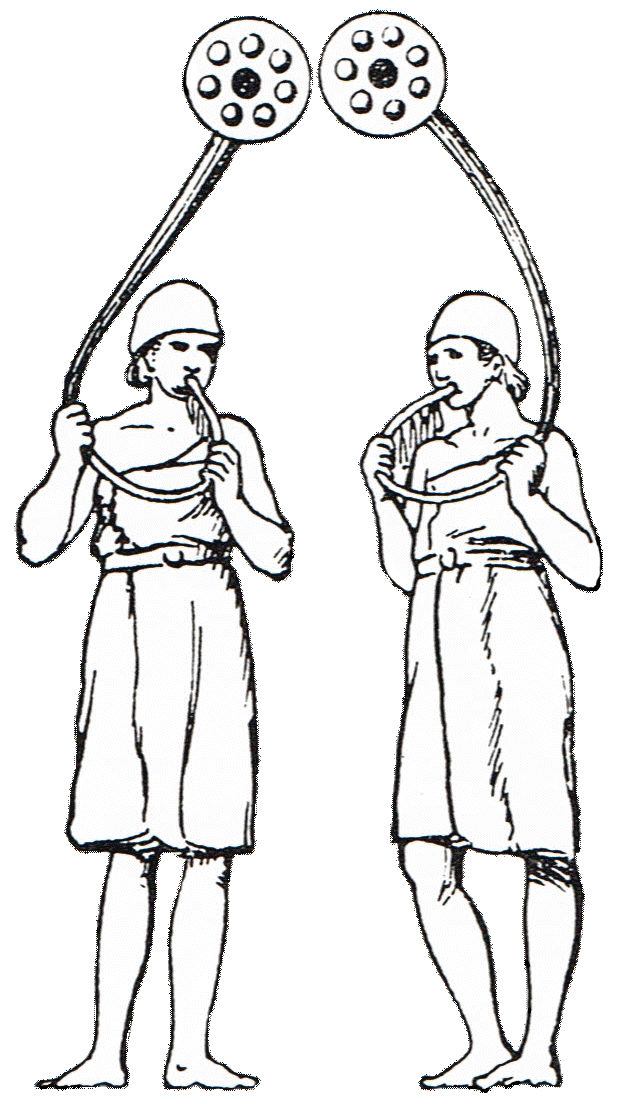Part 1 of 3
Despite their reputation for rape and pillage and the signs of their presence over much of Europe, the evidence for the Viking horns or trumpets comes from their heartland in the western Baltic. It was their settled life as farmers and people just getting on with things which bequeathed us their heritage of wooden instruments: their ancient wooden trumpets. It may seem unfair to saddle these instruments with the prefix ‘wooden’ as the term ‘lur’ was theirs, having first appeared in the Icelandic Sagas. Nevertheless, the term ‘lur’ was taken over by their Bronze-Age predecessors when the archaeologist C. J. Thomsen took over the term luđr from the Sagas. In these tales the lur is frequently mentioned as the instrument by which the warriors are called to battle and the connection of the name to the Bronze-Age instruments must have appeared logical at the time. In the Baltic and Scandinavia, the term also refers to a folk instrument made of wood which was sometimes wrapped with bark and one author, Broholm suggests that the term may originally have referred to a hollow log and, hence to the trumpet . In the town of Ystad the old tradition of the night-watchman’s horn is still carried out in which the town’s night-watchman blows a copper horn which is referred to locally as the kopparlur. In Denmark, in the Jutland dialect, luj is used to describe a shepherd’s instrument made of wooden staves and that children in parts of Jutland make a willow-bark trumpet in the spring which they refer to as a lur. A detailed look at the Viking wooden lur reveals their considerable variety in design, something not seen on the Bronze-Age instruments. The one thing which was consistent on the Vikining instruments was their manufacture by the split/hollow/reseal technique. This involved splitting a piece of wood before hollowing out the interior and then resealing the two halves, securing them mechanically with some binding material. A number of different timbers were used to create these wooden lurs, including willow and hazel. This use of a variety of softwoods contrasts strongly with the Irish practice of around this time and earlier when only Yew was used to create instruments by the split/hollow/reseal method. The bindings were of organic materials, again unlike the Irish horns and trumpets which were bound using bronze strips pinned into the timber of the tubes. Although the binding materials of the Viking wooden lurs were organic, sufficient of these have survived to allow us to identify what they were made of.
